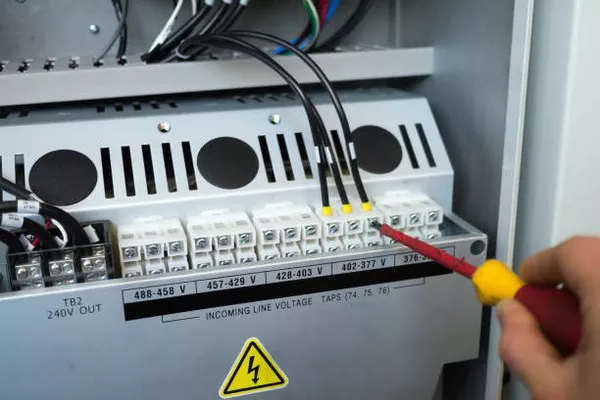In the annals of technological innovation, few inventions have had as profound an impact on modern society as the electrical transformer. This indispensable device serves as the cornerstone of electrical distribution networks, facilitating the efficient transmission of electricity over long distances while enabling voltage regulation and transformation. Understanding the origins of the electrical transformer unveils a fascinating journey of scientific inquiry, engineering ingenuity, and industrial progress. In this article, we delve into the historical narrative of the transformer’s invention, tracing its development from early experiments to the transformative breakthroughs that reshaped the landscape of electrical engineering.
Early Experiments and Precursors:
The roots of the electrical transformer can be traced back to the pioneering work of Michael Faraday and others in the 19th century. Faraday’s experiments with electromagnetic induction laid the groundwork for understanding the relationship between electricity and magnetism, setting the stage for transformative advancements in electrical engineering. Building upon Faraday’s discoveries, inventors and scientists began exploring ways to manipulate electrical currents and voltages for practical applications.
One notable precursor to the modern transformer was the induction coil, developed by the Hungarian engineer Ányos Jedlik in the 1830s. Jedlik’s device utilized mutual induction to increase or decrease voltage levels, foreshadowing the fundamental principles that would later underpin the operation of transformers. However, it would take several decades and the collaborative efforts of multiple inventors to refine and commercialize this concept into the modern transformer.
The Birth of the Transformer:
The official birth of the electrical transformer as we know it today can be attributed to the innovative work of William Stanley Jr., an American engineer and entrepreneur. In the late 19th century, Stanley embarked on a quest to address the inefficiencies and limitations of existing electrical distribution systems, which relied on direct current (DC) for power transmission. DC systems suffered from voltage drop over long distances, necessitating the use of costly and cumbersome infrastructure to maintain adequate voltage levels.
Stanley recognized the potential of alternating current (AC) as a solution to these challenges. AC offered the ability to efficiently transmit electricity over long distances at high voltages, with the flexibility to step down the voltage as needed for utilization in homes and businesses. In 1885, Stanley patented the first practical alternating current transformer, marking a pivotal moment in the history of electrical engineering.
The key innovation of Stanley’s transformer lay in its ability to step up or step down alternating voltages through electromagnetic induction. By winding primary and secondary coils around a shared magnetic core, Stanley created a device capable of transferring electrical energy from one circuit to another without direct electrical contact. This breakthrough paved the way for the widespread adoption of AC power distribution systems, revolutionizing the way electricity was generated, transmitted, and utilized.
Rapid Advancements and Industrial Adoption:
Following Stanley’s groundbreaking invention, the electrical transformer underwent rapid advancements and refinements as engineers and manufacturers sought to improve its efficiency, reliability, and scalability. Innovations in materials, such as the introduction of iron cores to enhance magnetic flux, contributed to significant performance enhancements in transformer design. Additionally, advancements in manufacturing techniques and standardization processes facilitated the mass production of transformers, making them more accessible and affordable for utilities and industries.
One of the pivotal moments in the industrial adoption of electrical transformers occurred during the War of Currents, a fierce rivalry between proponents of AC and DC power systems. The visionaries Nikola Tesla and George Westinghouse championed the superiority of AC power transmission, leveraging the transformative capabilities of the electrical transformer to build the world’s first large-scale AC power plants and distribution networks. Their success in electrifying cities like Buffalo, New York, and the Chicago World’s Fair of 1893 demonstrated the viability and efficiency of AC power, cementing its dominance in the burgeoning electrical industry.
Global Impact and Technological Legacy:
The widespread adoption of electrical transformers had a profound impact on society, fueling the rapid electrification of urban centers and rural communities around the world. From powering industrial machinery to illuminating homes and streets, electricity became synonymous with progress and modernity, transforming every aspect of daily life.
Over the decades, advancements in transformer technology continued to drive innovation and progress in the field of electrical engineering. High-voltage transmission lines enabled the efficient transfer of electricity across vast distances, linking remote power sources to population centers and industrial hubs. The development of specialized transformers for applications such as power generation, distribution, and voltage regulation further expanded the versatility and utility of electrical systems.
In the latter half of the 20th century, the advent of solid-state electronics and digital control systems ushered in a new era of transformer design and functionality. Solid-state transformers, equipped with advanced semiconductor devices and digital control algorithms, offer unprecedented levels of efficiency, reliability, and integration in modern power grids. These innovations continue to drive the evolution of electrical infrastructure, supporting the transition towards renewable energy sources and smart grid technologies.
See Also What Is The Function Of Transformer In Electricity
Conclusion:
The invention of the electrical transformer stands as a testament to human ingenuity, perseverance, and collaboration in the pursuit of technological progress. From its humble beginnings as a laboratory curiosity to its pivotal role in shaping the modern world, the transformer has left an indelible mark on the fabric of society. As we celebrate the legacy of this transformative device, we are reminded of the power of innovation to illuminate the path towards a brighter, electrified future.

